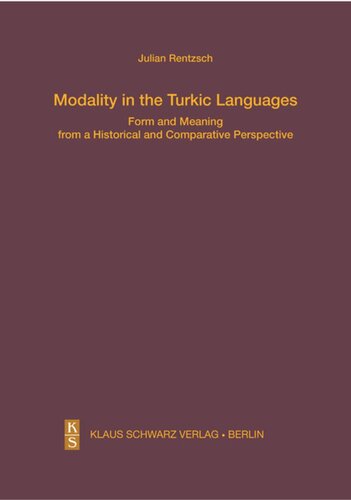

Most ebook files are in PDF format, so you can easily read them using various software such as Foxit Reader or directly on the Google Chrome browser.
Some ebook files are released by publishers in other formats such as .awz, .mobi, .epub, .fb2, etc. You may need to install specific software to read these formats on mobile/PC, such as Calibre.
Please read the tutorial at this link: https://ebookbell.com/faq
We offer FREE conversion to the popular formats you request; however, this may take some time. Therefore, right after payment, please email us, and we will try to provide the service as quickly as possible.
For some exceptional file formats or broken links (if any), please refrain from opening any disputes. Instead, email us first, and we will try to assist within a maximum of 6 hours.
EbookBell Team

4.8
14 reviewsThe Turkic language family features a wealth of expressions of modality, with large inventories of items within individual languages and considerable cross-linguistic variation. Taking the hierarchy of scope between different modal classes and their link to neighboring categories as a starting point for a basic classification, the study focuses on the internal semantic subdivision of three major classes of modality together with representative formal expressions of the semantic classes from numerous modern and pre-modern Turkic languages. The evolution of particular forms and underlying abstract structure types and their dissemination throughout the Turkic languages are investigated as well as the major semantic changes that can be observed in diachrony. The paths of conventionalization identified within Turkic are compared against universal paths of grammaticalization documented in the linguistics literature. This comprehensive synchronic and diachronic survey identifies the combasic parameters of Turkic modality systems, provides an insight into the intra- and cross-linguistic diversity, and offers new perspectives for further research into this hitherto little-studied domain.